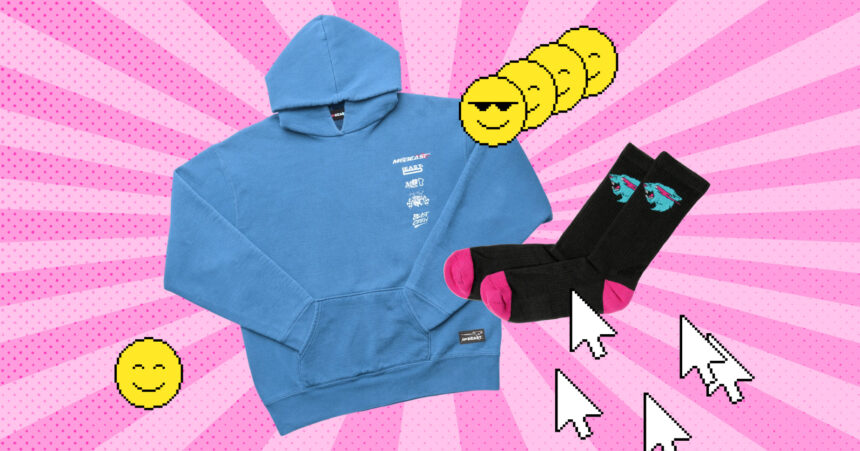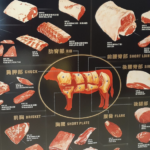You’ve launched your brand. You’ve developed a loyal fanbase. Now, you want to create and sell merchandise. But how do you do it?
Merch like t-shirts, plush toys, phone cases, custom socks, and sweatshirts can turn customers into brand ambassadors while creating a new revenue stream for your business. This is an industry that has grown significantly over the last decade.
Ahead, learn the why and how of making and selling merch. With insights and advice from Zack Honarvar, cofounder of Fan of a Fan, learn how to take your fan engagement to the next level through the power of merchandise.
Why do people buy merch?
When done right, merch helps fans feel connected to what your brand embodies and to others in your community.
It can create opportunities to:
- Identify and build more meaningful relationships with your true fans
- Delight (and grow) your audience with free giveaways
- Partner with other creators and brands for product drops
- Encourage fans to post content featuring your merch
- Generate free word-of-mouth advertising
For example, fans of Yes Theory have shared stories about wearing merch from the creators’ sub-brand, Seek Discomfort, under their suit on their first day at a new job. Others have even worn it for the birth of their first child, because of the optimism and personal growth the brand represents.
“One of our fans wrote to us about how their flight got canceled and the next flight was hours away,” says Zack. “They saw someone at the gate wearing a Seek Discomfort hoodie. While stranded at the airport, the two strangers ended up becoming good friends, strictly over the fact that they were mutual fans of the channel.”
While diehard fans might get their wallets out for a t-shirt featuring your logo, Zack says the most meaningful merch has the potential to transcend your fanbase and reach new audiences. Whether you’re making merch for your TikTok channel or your Twitch followers, there is undoubtedly big possibilities with branded merch.
Coming up with a merch strategy
Merch is as versatile as you want it to be. It can be a source of sustained revenue through your own store, the catalyst for a collaboration with another brand, or simply free swag you offer to loyal customers.
One of the biggest decisions you’ll make with your merch strategy is whether to sell under your existing brand or launch it under a sub-brand (like Yes Theory’s Seek Discomfort).
Selling merch under a sub-brand
A sub-brand typically features the parent brand’s attributes (color palette, messaging, and imagery), but usually has its own logo, products, and services.
“The advantage of this approach is that it can grow an audience beyond your existing customer base,” says Zack. A sub-brand may also facilitate collaboration or co-branding.
For example, Seek Discomfort pursued collaborations with brands including Bose, Lululemon, and Timbuk2 backpacks—opportunities Zack thinks they may have missed had the brand been portrayed as “Yes Theory merch.”
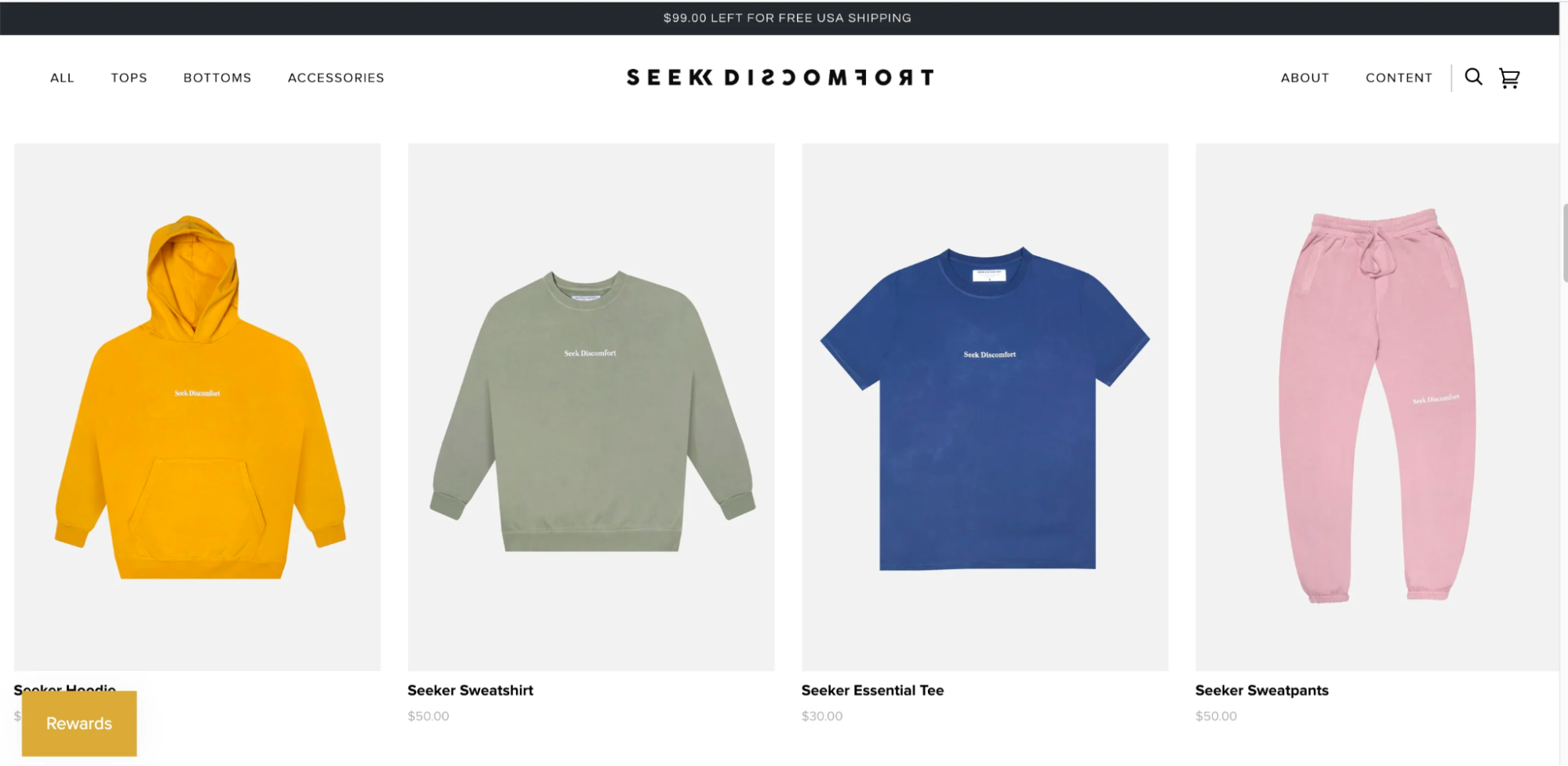
Selling merch under your existing brand
In the case of Atticus the poet, it made sense to leverage the name he made as a writer with an ecommerce website where fans can find his books, t-shirts, hats, jewelry, and own brand of wine.
“Atticus has a clothing line that’s a little bit more merch-based,” says Zack says. “But then he also has a line that he sells in-store and online called Lost Poet Wine. And that’s something outside of his ‘Atticus’ brand.”
Atticus also sells merch directly on Facebook and Instagram via his Shopify store.
Whatever approach you decide to take, making great merch ultimately comes down to trusting your gut.
“Create a product you’re proud of, that you want to stand behind, and that you also want to use or wear,” adds Zack.
How to make merch in 4 steps
Creating merch can be as simple as putting your signature logo on a t-shirt or hat. But there’s a simple process to produce fresh merch concepts that resonate with your fans and even new audiences:
- Define your brand identity
- Brainstorm and validate product ideas with your audience
- Design and mock up your products
- Choose a print on demand partner or find a manufacturer
1. Define your brand identity
Let’s use Shopify as an example to show you how to go from idea to prototype.
Shopify is a platform that powers the businesses of millions of entrepreneurs, providing the tools they need to start and grow their own ecommerce company.
Shopify’s brand is about independence, resilience, creativity, and, of course, getting down to business.
Think about what your brand identity and what makes it unique. This will help you narrow down the aesthetic and even the type of merch you might want to make. Use that as a starting place for the merch-making process.
2. Brainstorm and validate product ideas with your audience
Over the years, you’ve established a brand that resonates with your customers. Why not ask them what type of merch they’d want to buy?
“We always recommend that the creator or the brand ask their audience what they want, or even let them decide between several options. You can ask through Instagram Stories or email or communities, or even texting. ‘Would you prefer a hat, a board game, a t-shirt, or a hoodie?’” says Zack.
Polling your audience for feedback has the added benefit of making them feel like they’re a part of the process and the products you eventually create.
So, we did this with our own audience on X (formerly known as Twitter) to see what they’d want to see in potential Shopify merch.
Based on the feedback we received, we prototyped the following merch ideas:
- Shopify bag logo t-shirt/crewneck/hoodie. The Shopify bag is our iconic logomark and an obvious design to serve up for fans.
- Minding My Business dad hat. A cheeky play on words about how entrepreneurs are often heads down working on their own businesses. Putting this slogan on a hat seemed to fit.
- Cha-ching hoodie. “Cha-ching” is the sound Shopify makes when you get a new sale. What would that look like as a design on a hoodie?
- Independent crewneck. Independence defines many of the people who use Shopify to power their business. It’s a powerful word that connects with our brand.
- Shop Small, Think Big tote bag. The perfect tote bag to take with you while you’re shopping at the independent businesses in your community.
- “Ask Me About My Business” t-shirt. A simple way for independent business owners to share their identity with others.
- Shoppy hoodie. Shoppy is the unofficial Shopify mascot, created during a company hacking event many years ago.
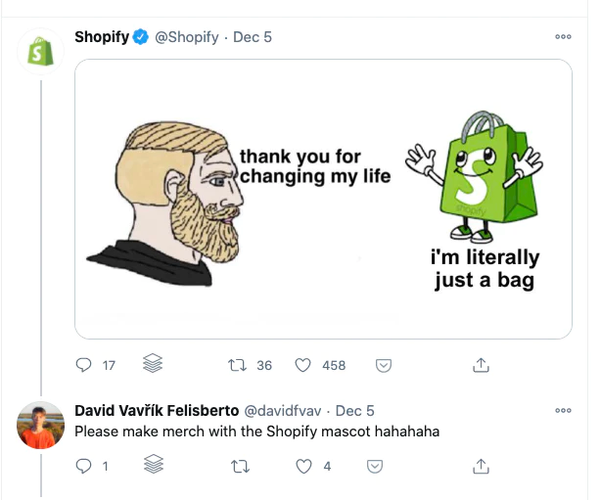
3. Design and mock up your products
While most merch companies offer design services, Zack recommends trying to own as much of the design process as possible.
“You’re probably better off sourcing your own designs, because you’ll understand your brand far better than someone who is just learning about your brand for the first time,” he says.
You can hire a merch designer on Upwork or tap your network for a designer, but keep the following tips in mind:
- Provide context. Tell them what kinds of merch you’ve selected and who your audience is, and share any brand guidelines you have.
- Clearly explain what you want. Over-communicate what you’re looking for and be sure to provide concrete feedback during design reviews (you should get at least one or two review cycles).
- Create a mood board. Curate inspiration, examples, and references to help the designer know where to start.
Many print-on-demand companies have mockup generators you can use to create your products. Mockup and design tool Placeit allows you to create lifestyle mockups of your design you can then share with your audience for feedback.
Just like asking your audience for product ideas, you can also get design feedback the same way. Your audience will feel involved and you’ll be sure you’re going in the right direction.
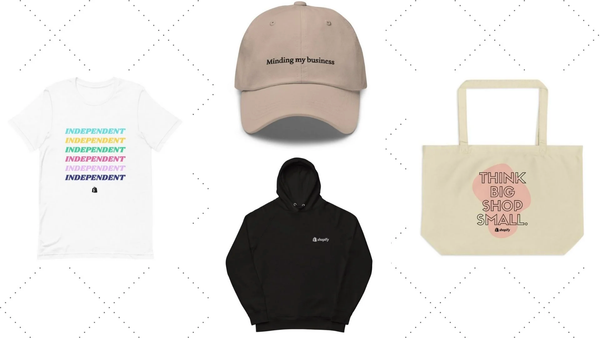
4. Choose a print-on-demand partner or find a manufacturer
Once you’ve received feedback on your product mockups, you can start thinking about how to make merch.
There are two popular options:
- Print on demand. You can automate production, shipping, and fulfillment with a print-on-demand partner.
- Manufacture from scratch. You can find a manufacturer for the specific product you want to make, get it produced, and hold your own inventory to sell (or work with a third party for shipping and fulfillment).
Let’s dive into each approach.
Services for making merch
Print on demand is low-cost, low-risk, and easy to set up and manage. However, your products and customization options are limited depending on the service you choose. Manufacturing from scratch, you’ll have more options and flexibility to create the exact product you envision, but it will be more expensive to produce.
Using a print-on-demand service
Most print-on-demand services are free to start (you only pay for the products when a customer orders). Each one contains its own catalog of products, but you can generally find basic apparel items and accessories, including t-shirts, hoodies, sweatpants, and phone cases.
Always order samples for quality assurance before you start selling. Colors might look one way on your computer screen but show up differently in person. You can reach out to your print-on-demand service’s customer support if you’re ever unsure.
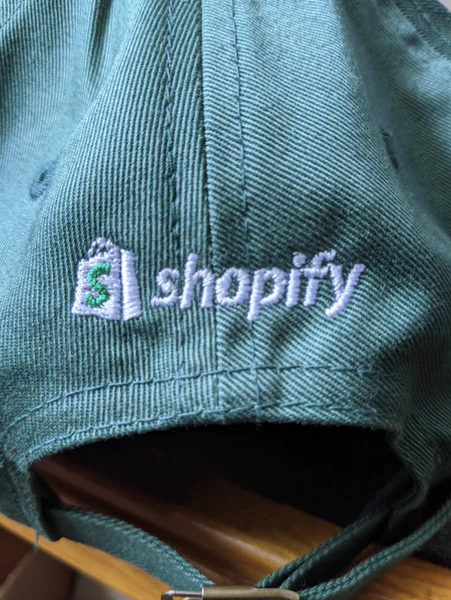
Finding a manufacturer
If you’re not interested in pursuing your own handmade items to make and sell, you can find a manufacturer to create your products. With Shopify Capital, you could be eligible for funding to cover the expenses involved in manufacturing your own items.
Compared to print on demand, you can think further outside the box as to how you want to design your products. You can make uniquely designed hoodies or even your own board game.
Companies like Fan of a Fan that make merch for creators and brands; it’s a good idea to shop around before selecting a partner.
Here are some of the things to keep in mind before signing a contract for merch:
- Ownership of intellectual property. Who owns your brand’s IP, the designs on the clothing, and anything new that gets created as a part of this partnership? You’ll want to make sure you retain the rights in case you part ways with the partner.
- Compensation structure. Is it a fixed cost or is it variable based on profit revenue share? Revenue share models are the most common when working with merchandising companies and can be anywhere from 15% to 50% of your revenue.
- Commitment. Zack suggests you never sign anything long term with one partner. Come up with a trial period (e.g., three months or one product drop). Use that to determine if this partner meets deadlines, produces quality products, responds to emails in a timely manner, and is all-around reliable. After this trial, you can evaluate whether to continue working with them.
- Hidden costs. From beginning to end of a product launch, go through any costs that may come up, such as warehousing costs, picking and packing fees, shipping fees, design fees, website management, and customer service fees. You don’t want to sign a rev share agreement and then have all hidden costs sneak up on you.
How to sell merch
Marketing merch is a little different than marketing a traditional product—you’re selling to existing fans first and new customers second. That also means you have a guaranteed audience of potential customers.
Here are just some of the marketing opportunities you can use to sell your merch.
Word of mouth
Great merch is its own marketing. If a fan buys your product and wears it often, chances are people will ask them about it.
But it has to be a high-quality product. “If you’re selling merchandise, that’s real-estate that you now have on your fans, who are walking around and promoting your brand,” Zack says. “But if you create something low quality, then they’re only going to wear it once or twice.”
The more someone wears your merch or pulls out your product to show others how amazing it is, the more exposure you get. Make merch worth showing off to generate more word-of-mouth buzz.
Seek Discomfort is known as high-quality merch, so much so that celebs and athletes, like top tennis player Stefanos Tsitsipas, are seen wearing it in person and on social media.
Integrate your products into your content
The content you create is another natural place to plug your merch. Whether that means wearing it in your videos, promoting it directly in social media posts, or building it into the creative concept of your next piece of content (such as a contest prize).
If you build your merch store on Shopify, you can sell your products more easily in your content by integrating your store wherever your audience lives. Here are some of the channels you can explore and approaches you can take:
TikTok: Partner with other TIkTok creators to get them to create content with your merch.- Instagram: Tag your merch in your posts and stories and curate your own Instagram Shop on your profile.
- YouTube: Share links to your products in your video description or cards, with a call-to-action at the end of your video itself.
- Buy Button: If you have a separate website or blog outside of your merch store, you can embed your products or collections there as well.
You can also use a “link in bio” tool like Linkpop to create a landing page that connects your social media followers to the products you sell online, as well as other content.
The best way to connect your merch to your content is up to you—it is your audience, after all. For Seek Discomfort, that meant hosting a fashion show in its backyard.
Remarket to your existing audience
Retargeting lets you promote ads to your existing audience based on specific criteria, such as whether they follow you on Instagram or have already made a purchase.
Many ad platforms (Google, Facebook, YouTube, TikTok, Snapchat) allow you to run retargeting ads, as long as you installed their advertising pixel on your website. If you’ve been building your email list, that’s definitely a channel you’ll want to use to promote your merch.
“That’s where you’re going to have really high engagement and (return on investment) ROI,” says Zack. “Whereas with prospecting, most of the time people aren’t going to buy merchandise from someone they’ve never heard of before. So that’s where the bulk of your energy from paid media spend should go.”

Run a presale
Nothing builds hype for a new product like a presale campaign. A presale gives your audience the opportunity to purchase your product before it launches so they can be the first to get it when it drops.
The advantage? You can gauge demand before investing in stock and even create a sense of scarcity or urgency to encourage fans to buy early.
“Yes Theory has done this a lot, especially earlier on when they first started,” Zack says. “We would create a couple items of clothing that were our samples. We would do photo shoots in them and hold no inventory. Then we would put the site up for 72 hours, sell for 72 hours, and shut the site down. From there we would start communicating through email with our audience, so that they knew where we were in the production process.”
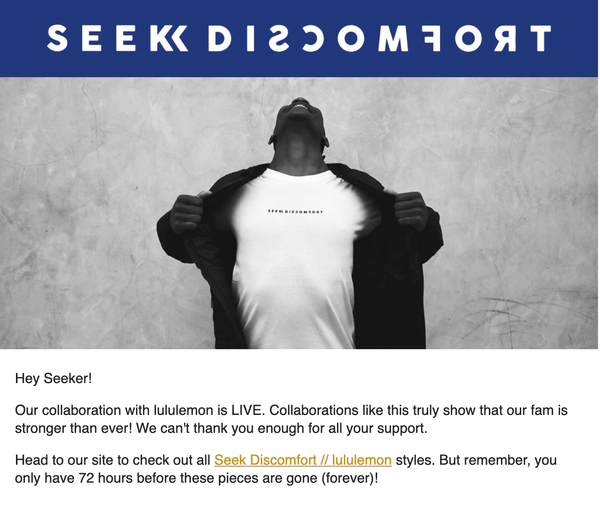
There are a variety of preorder apps in the Shopify App Store to help you run your own presale. You can run your presale using a crowdfunding site like Kickstarter.
Make merch your fans will rave about
There are many reasons to get into the merch game beyond the additional revenue stream it can create. Merch connects your fans to your brand, gives them a chance to show off their enthusiasm for you, and makes them feel like a part of something bigger.
It’s a business idea where you can apply your creativity in fresh ways beyond the content or products that brought your fans to you in the first place. Again, ask your audience and hold polls about possible designs.
If selling merch is your first step into ecommerce, Shopify is one of the fastest and simplest ways to get started. Turn your followers into customers by setting up your shop on social.
Ready to start making and selling your merch? At Shopify, we have loads of resources—from funding to guides on sourcing a product—to help you on your way. Start with a free trial and explore all the tools and services available.
How to make merch FAQ
Does selling merch make money?
Yes, selling merch can make money. Many businesses make money by selling merchandise such as t-shirts, hats, mugs, and other items. Selling merch can be a great way to supplement income for businesses and can even become a significant source of income.
Does it cost money to make merch?
You can start making merch with little upfront costs. If you have the skills, you can create the design yourself, mock it up using free tools, and offer a presale on your shop. Communicate clearly with shoppers about when the merch will arrive, then place your order to have it created based on the number of items you sell.
How do content creators make merch?
Many content creators use print-on-demand services to make branded merch, either with their own branding or a secondary brand. Some content creators curate products, or sell subscription boxes, while others create their own product lines, either in collaboration with an existing brand or on their own.
What do I need to sell merch online?
Making and selling merch online is simpler than ever. There are a few steps to follow in to get you set up quickly:
- Define your brand identity.
- Brainstorm and validate product ideas with your audience.
- Design and mock up your products.
- Choose a print-on-demand partner or find a manufacturer.
- Add products to your shop.
- Market your products to fans.
Is it legal to sell merch?
Yes, it is legal to sell merch. However, you may need to obtain permits or licenses depending on the state or locality in which you are operating.

